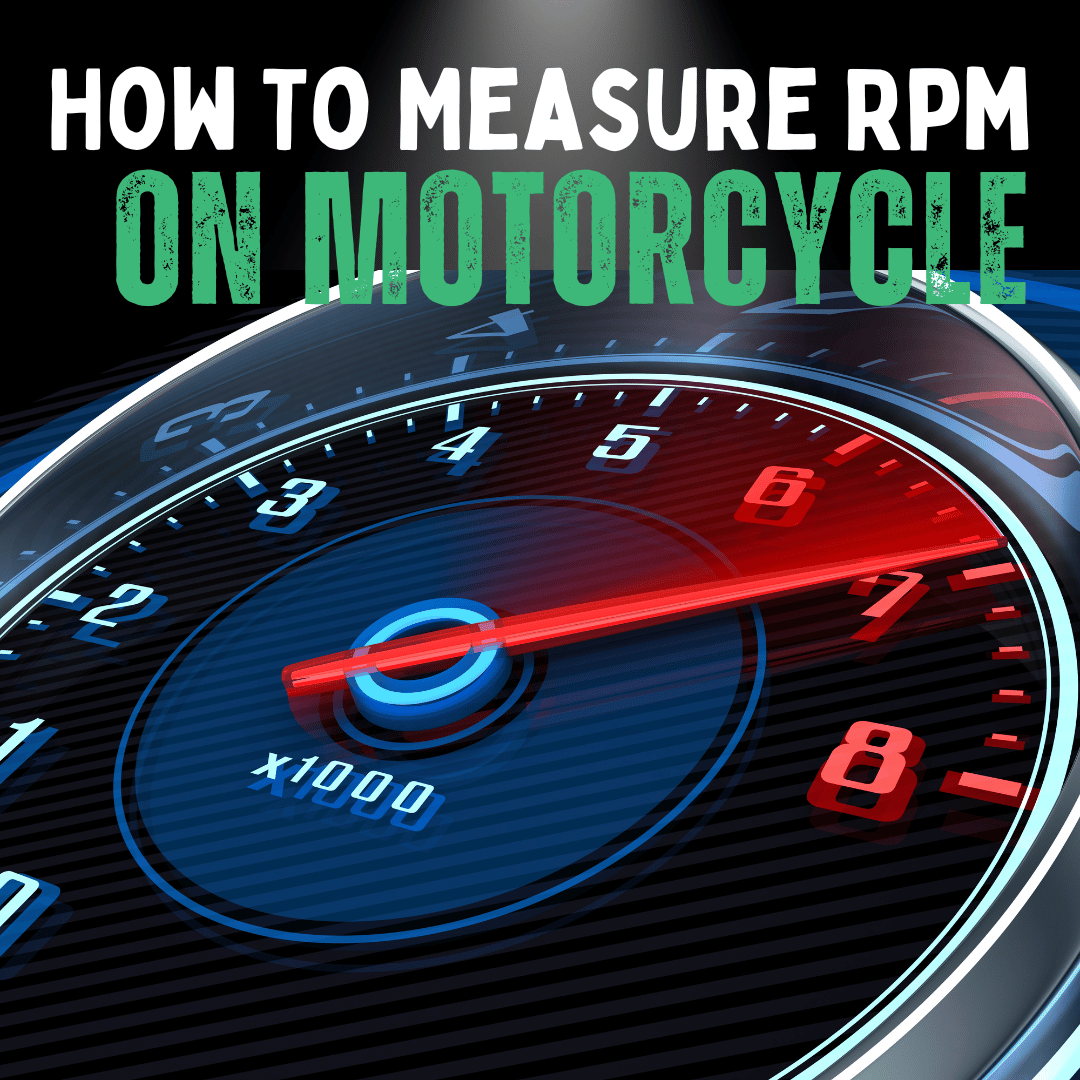
Published: 2 October 2023
Updated: 24 March 2025
Mastering your motorcycle means understanding its Revolutions Per Minute (RPM)—key to optimizing performance, efficiency, and longevity.
Whether you’re a beginner or a seasoned rider, this guide explores various methods to measure your bike’s RPM accurately.
Summary of Methods to Measure Motorcycle RPM
| Method | Description |
|---|---|
| Digital Tachometer | Wrap a wire around the spark plug and connect to a digital tachometer for accurate readings. |
| Wireless Tachometer | Use a wireless tachometer to check idle RPM without physical connections. |
| Multimeter | Measure RPM by connecting a multimeter to a spark plug wire and multiplying the reading by 120 for 4-stroke engines. |
| Sound Recording | Record the engine sound while idling and analyze the frequency to calculate RPM. |
| Built-in Tachometer | Check the user manual and use the bike’s built-in tachometer for idle RPM readings. |
Comparison of RPM Measurement Methods
| Method | Pros | Cons |
|---|---|---|
| Digital Tachometer | Accurate, easy to read | Costly (£100-£200) |
| Wireless Tachometer | Convenient, no cables | May need setup skill |
| Multimeter | Uses existing tools | Less accurate |
| Sound Recording | No special equipment needed | Requires analysis |
| Built-in Tachometer | Simple, built into the bike | May need calibration |
Method 1: Using a Digital Tachometer
Steps:
- Purchase a digital tachometer from an auto parts store or online.
- Wrap the tachometer wire around the spark plug cable securely.
- Start the engine and let it idle.
- Read the RPM on the tachometer display.
Common Mistakes to Avoid:
- Loose Wiring: Ensure the wire is tightly wrapped to avoid inaccurate readings.
- Incorrect Positioning: Keep the wire away from other electronics to prevent interference.
- Skipping Calibration: Calibrate the tachometer before use for accurate results.
Method 2: Using a Wireless Tachometer
Steps:
- Buy a wireless tachometer compatible with your motorcycle.
- Follow the manufacturer’s setup instructions.
- Start the engine and let it idle.
- Check the idle RPM on the wireless tachometer.
Calibration Tips:
- Read the user manual for calibration instructions.
- Test at various speeds and cross-check with another method.
- Calibrate in conditions similar to your typical riding environment.
Method 3: Using a Multimeter
Steps:
- Connect the multimeter to the engine cylinder’s spark plug wire.
- Start the engine.
- For a 4-stroke engine without a wasted spark, multiply the multimeter reading by 120 to get RPM.
Understanding Readings:
- The "120" factor accounts for 60 seconds per minute times 2 for a 4-stroke engine.
- Check your manual for adjustments if your bike has a wasted spark system.
Method 4: Sound Recording
Steps:
- Record the sound of your bike idling with a device.
- Use software to graph the sound frequencies.
- Calculate RPM based on the frequency graph.
Science Behind It:
- Engine sound frequency correlates with RPM—higher frequency means higher RPM.
- Sound analysis software helps pinpoint the exact frequency for calculation.
Method 5: Built-in Tachometer
Steps:
- Locate the tachometer on your motorcycle’s dashboard.
- Start the engine and let it idle.
- Compare the idle RPM to the user manual’s recommended range (typically 700-1,000 RPM).
Why It Matters:
- Fuel Efficiency: High idle RPM can waste fuel.
- Engine Health: Abnormal RPM may indicate issues.
- Performance: Optimal RPM ensures better power and torque.
Conclusion
Measuring your motorcycle’s RPM is essential for performance, efficiency, and engine health.
Choose a method that suits your needs and take control of your ride!
FAQ’s
Why is measuring RPM important for a motorcycle?
It helps with engine tuning, improves fuel efficiency, and prevents wear, extending your bike’s lifespan.
Can I use any digital multimeter to measure RPM?
No, you need an automotive multimeter with a tachometer function to measure RPM accurately.
How accurate are these RPM measurement methods?
Digital and wireless tachometers are the most accurate; sound recording and multimeters may be less precise.
Is it safe to measure RPM myself?
Yes, if you wear protective gear like electrical gloves and follow your manual, but consult a pro if unsure.
What’s the typical idle RPM range for a motorcycle?
Most motorcycles have an idle RPM range of 700-1,000 RPM, but check your user manual for specifics.
Ready to Ride? 🚀
Loved our 2025 guide on measuring motorcycle RPM?
Explore more at RiiRoo.com or chat live with us!





Share:
What Motorbike Can I Ride On A Car Licence?
How to Start A Motorcycle on a Hill